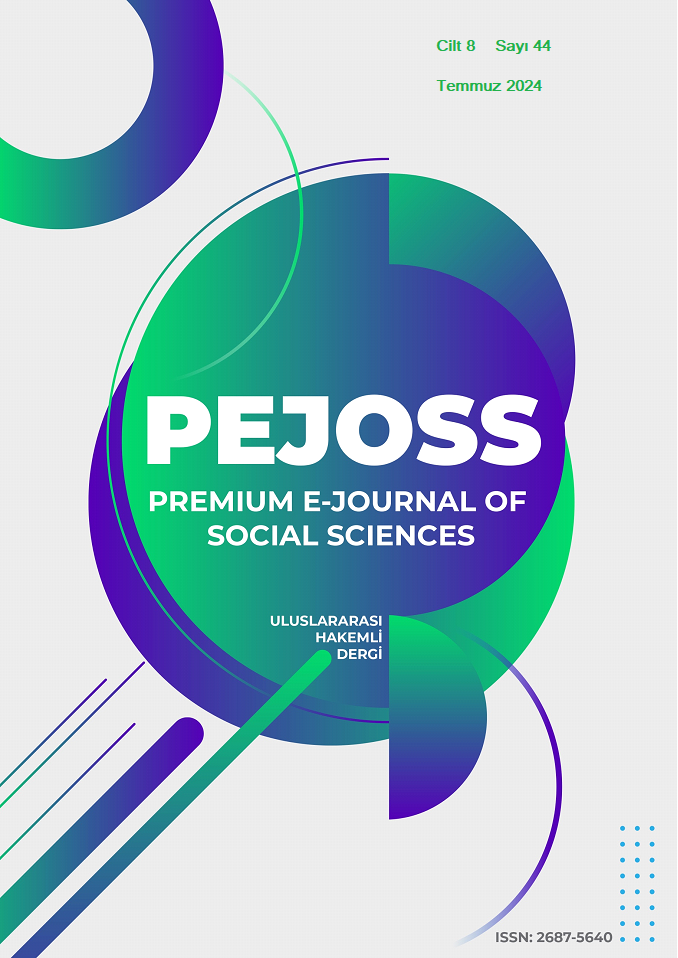Toplam Kalite Yönetiminde İstatistiksel Kalite Kontrol Tekniklerinin Endüstriyel Bir Projede Kaynak Hataları Üzerinde Uygulanması
DOI:
https://doi.org/10.5281/zenodo.13151908Anahtar Kelimeler:
Kalite, Toplam Kalite Yönetimi, Temel Kalite Kontrol TeknikleriÖzet
Bu makale, endüstriyel projelerde kaynaklı imalat sürecinde Toplam Kalite Yönetimi ve İstatistiksel Kalite Kontrol Tekniklerinin uygulanmasını araştırmaktadır. Kaynak faaliyetinin iş akışı, kaynak öncesi, kaynak esnasında ve kaynak sonrası aşamaları içeren bir akış diyagramıyla detaylı bir şekilde açıklanmıştır. Şirketlerin sürekli kalite iyileştirmeyi başarmak için uygun araçları kullanmaları gerekir. Bu çalışmada yedi temel kalite kontrol aracının sistematik kullanım olanaklarının bir değerlendirilmesi sunulmaktadır. Bu çalışma ile yedi temel kalite kontrol aracının projelerin içersindeki imalat süreçlerinde de kullanılabileceğinin gösterilmesi amaçlanmıştır.
Kontrol kartları, tahribatsız test zorunluluğunun başarıyla yerine getirildiğini ve bu testlerin zaman içindeki dağılımını göstermiştir. Projede aynı zamanda kaynak ret oranları incelnerek proje kalite planına uygunluğu değerlendirilmiştir. Pareto diyagramları kullanılarak tahribatsız test sonuçlarına odaklanılmış ve öncelikli hata türleri ile aylara göre hata dağılımı analiz edilmiştir. Neden sonuç diyagramları ile kaynak hatalarının genel nedenleri belirlenmiş ve çözüm önerileri sunulmuştur. Yapılan analizler, yönetim kararlarının, operasyonel süreçlerin ve çalışanların performansının projedeki kaynak hatalarını etkilediğini göstermiştir. Bu dönem projesi, kaynak faaliyetleri kapsamında proses yönetimi ve kalite kontrol mekanizmalarının detaylı analizini sağlayarak endüstriyel projelerde benzer sorunların önlenmesine yönelik stratejiler geliştirmeyi amaçlamaktadır.
İndirmeler
Referanslar
Antony, A., Bhat, S., Jayaraman, R., McDermott, O., Sony, M. and Snee, R. (2022), “The genealogy of Quality 4.0”, ISE Magazine, 54 (4), 1-6.
Antony, J., McDermott, O., Sony, M., Fernandes, M.M. and Ribeiro, R.V.C. (2021), “A study on the Ishikawa’s original basic tools of quality control in South American companies: results from a pilot survey and directions for further research”, The TQM Journal, 33 (8), 1770-1786.
Bendell, T., Penson, R. and Carr, S. (1995), “The quality gurus – their approaches described and considered”, Managing Service Quality: An International Journal, 5 (6), 44-48.
Carvalho, R., Lobo, M., Oliveira, M., Oliveira, A.R., Lopes, F., Souza, J., Ramalho, A., Viana, J., Alonso, V., Caballero, I., Santos, J.V. and Freitas, A. (2021), “Analysis of root causes of problems affecting the quality of hospital administrative data: a systematic review and Ishikawa diagram”, International Journal of Medical Informatics, 156 (104584), doi: 10.1016/j.ijmedinf.2021.104584.
Pavletic, D., Sokovic, M., Paliska, G., (2008). “Practical Application of Quality Tools.” International Journal for Quality Research. 2 (3), 199-205
Prajogo, D.I. and Sohal, A.S. (2001), “TQM and innovation: a literature review and research framework”, Technovation, 21 (9), 539-558.
Zairi, M. (2013), “The TQM legacy – Gurus’ contributions and theoretical impact”, The TQM Journal, 25 (6), 659-676
İndir
Yayınlanmış
Nasıl Atıf Yapılır
Sayı
Bölüm
Lisans
Telif Hakkı (c) 2024 Premium e-Journal of Social Sciences (PEJOSS)

Bu çalışma Creative Commons Attribution 4.0 International License ile lisanslanmıştır.


